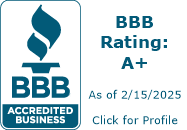
Federal Reserve Chairman Powell recently announced that inflation is transitory. Sound familiar? Janet Yellen, the prior fed chair, used this same term 2017 and 2018. Seems like we are in an extended “transit”. Why? Are we headed for the next recession? We keep hearing that inflation will continue to accelerate, but nothing has happened with inflation in the last 3 years; it remains muted with wage growth basically non existent. How can we be in “transit” for over 3 years? Shouldn’t the inflation train start running or stay still? It seems like the train continues to be stuck! How will the federal reserve’s perception on inflation impact the economy?
Last week Chairman Powell emphasized the “transitory” nature of inflation as his justification to keep rates constant. In the same speech he emphasized that lack of inflation is why the federal reserve will hold rates steady until they can understand the “risks” to the economy. Inflation cannot be both transitory and yet muted, they are opposite descriptors of the economy. After the speech bond prices decreased as yields increased as traders bet that the federal reserve would hold at neutral longer than anticipated.
Is Federal Reserve Chairman Powell smoking the fake news? How long can something be temporary or “transitory”. It seems like we have been “transitory” for many years now! Unfortunately, we all know that we can’t be in transition forever, either the train leaves the station, or it doesn’t leave the station.
In this case the inflation train is stuck at the station and is not “transitory”. There are three variables holding the inflation train at the station: commodities, wages, and the business landscape.
Structural changes in the economy: Autos, homes, etc… are becoming more efficient. For example, think of the power needed for lighting. With modern lighting instead of using 75 watts for a recessed light, the same amount of light can be had with an LED bulb for 3 watts. This in turn results in less power demand from the electric company. The same is occurring on the auto front as cars become substantially more efficient. Furthermore, renewables are driving the prices of electricity down as well as more consumers opt for solar installations. The economy continues to evolve to become more efficient which will mute large changes in commodities driving inflation.
Second, wage growth has continued to be held back. Powell has stated on many occurrences that wages will increase and ultimately drive inflation. Unfortunately, this is likely not going to happen. Seattle is in the midst of a “grand experiment” to increase the min wage substantially and therefore increase the take home pay of workers. A recent University of Washington study shows that take home pay increases until a “tipping point” is reach and after that point, the take home pay of workers actually declines. (Read the full article) How is this possible? As wages increase businesses look at alternatives including outsourcing, automation, etc.. that decrease the labor amount. For example, think of Domino’s pizza. In the past you would call in and speak to a person to order a pizza. Now you can order online twice as fast thereby greatly reducing the number of people needed to answer the phones. On the flip side UPS is testing technologies that enable machines to load and unload trucks. This would eliminate substantial labor in their operation. As wages rise, businesses adapt to increase efficiency and control labor costs. This same shift is happening throughout the economy which will counteract any large movements in labor costs.
Finally, the business landscape is rapidly changing and greatly reducing price increases on various products. Think of 10 years ago, if you wanted a widget you would go to the store, pick out a widget, maybe talk with a saleperson, checkout and go home. There were multiple touchpoints. Now to buy a widget, you would likely go on Amazon or google to read reviews, find the lowest price, press a button and the widget shows up at your door. The item was drop shipped directly from the manufacturer to your house without all the touchpoints saving time, labor, and ultimately money. This radical change in consumption habits has altered the business landscape. No longer do you need staff waiting to sell a good that is sitting on the shelf at Macy’s when the process has been totally automated. The supply chain efficiency has gone from a focus of manufacturers (raw materials) to the retail industry greatly reducing costs both for the retailers and the consumer. This efficiency has kept prices (inflation) very low for many consumer goods and will continue to do so as automation continues to progress.
With the fed’s focus on “transitory” inflation it hints that the fed will not react quickly enough to actual economic changes as they fear that inflation could rear its head and become problematic. This one word indicates that the fed will be too cautious in cutting rates just as they are being very cautious on raising rates. When the economy begins to waiver the federal reserve will be on the fence still waiting for the transitory inflation to come back when they should be cutting rates. The fed will help drive the bus into the next recession due to their lack of action on the downside risks to the economy.
The inflation train is still stuck at the station and will not depart any time soon. Chairman Powell needs to realize that the inflation game in not transitory forever as structural economic changes, the lack of wage growth, and the changing business landscape will ensure that the inflation train does not get going anytime soon. The Federal reserve needs to recognize the inflation risk is nonexistent and their focus on this elusive inflation goal will greatly increase the downside risk to the economy as the hesitate on the way up and subsequently down with rate moves.
I need your help!
Don’t worry, I’m not asking you to wire money to your long-lost cousin that is going to give you a million dollars if you just send them your bank account! I do need your help though, please like and share our articles on linkedin, twitter, facebook, and other social media. I would greatly appreciate it.
Written by Glen Weinberg, COO/ VP Fairview Commercial Lending. Glen has been published as an expert in hard money lending, real estate valuation, financing, and various other real estate topics in the Colorado Real Estate Journal, the CO Biz Magazine, The Denver Post, The Scotsman mortgage broker guide, Mortgage Professional America and various other national publications.
Fairview is a hard money lender specializing in private money loans / non-bank real estate loans in Georgia, Colorado, Illinois, and Florida. They are recognized in the industry as the leader in hard money lending with no upfront fees or any other games. Learn more about Hard Money Lending through our free Hard Money Guide. To get started on a loan all they need is their simple one page application (no upfront fees or other games).
